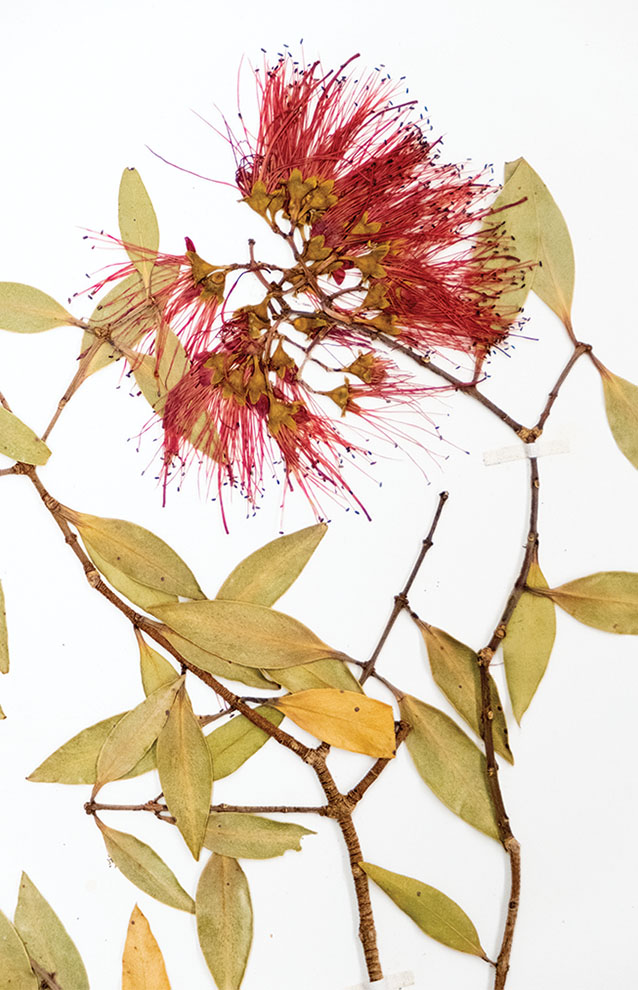
Most herbaria around the world-facilities that preserve plant specimens-are hermetically sealed, with museum-quality storage and displays. But the humble yet critically important Joseph F. Rock Herbarium, named for a renowned Hawaii botanist, is just a room on the campus of the University of Hawaii at Manoa. "There are occasional floods when pipes burst, and we battle insect infestations," sighs Karolina Heyduk, assistant professor of botany and director of the century-old herbarium. "It's a struggle, and urgency is our insurance policy to preserve these collections."
With a generous award from the National Science Foundation, botanists at UH Manoa are working to digitally catalog the herbarium's fifty-five thousand (or so) plant specimens, most of them native or endemic (meaning that they are found nowhere else in the world) to Hawaii or the Greater Pacific Basin. The herbarium is an underutilized resource, Heyduk says. Botanists around the world have generally overlooked it due to limited access and lack of information about its holdings. "It's a small collection that represents a huge diversity of Hawaiian plant species tucked away in a dark closet," says Heyduk, who's spearheading the project. "Some could be the last specimens of super rare or extinct plants in the wild." Heyduk points to the once diverse Hawaiian lobeliads as a prime example, which declined along with the native birds that pollinated them.
But with the digital catalog, that dark closet will be opened. "There's a lot of potential," Heyduk says, "for identification, to track a plant's flowering time across the last hundred years, to observe how plants evolve ... all by looking at the digital specimen. Perhaps most exciting is the ability to showcase personal collections of those who contributed decades ago, like world authority on plants, former UH botany chair Charles Lamoureaux." Or the "awesome" Hawaiian fern collection by amateur botanist Dan Palmer.
Seven undergraduates are currently helping with the process: mounting delicate specimens onto archival paper, photographing, digitizing and inputting data with information like who collected it, when, where and how. Some of the collection is currently online and is projected to be fully digitized by 2025. Anyone-whether researchers or hobbyists-can zoom in on high-resolution images in the searchable public database.
"This enables us to join a movement across herbaria around the globe," says Heyduk, "to get all of our specimens online so that they're more functional, connected to the broader whole and useful in today's scientific world."


